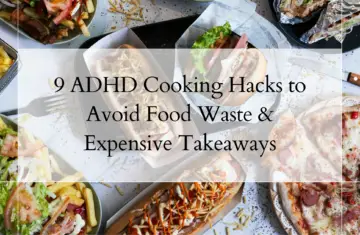Living with ADHD often means facing unique challenges when it comes to weight loss. From impulsivity and forgetfulness to emotional regulation difficulties and lack of focus, it can sometimes feel like an uphill battle. However, the good news is that ADHD also comes with some distinct strengths—traits that can be powerfully leveraged to help you reach your weight loss goals. By understanding and harnessing these strengths, you can create a personalized weight loss strategy that feels natural, energizing, and even fun.
In this blog post, we’ll explore how you can use your ADHD strengths to make weight loss a more achievable, rewarding journey.
Hack your hyperfocus.
One of the most common ADHD traits is hyperfocus—the ability to dive deeply into a task and concentrate intensely for extended periods. While this can sometimes lead to difficulties in switching tasks, when used strategically, it can be a powerful tool for weight loss.
How to Use Hyperfocus for Weight Loss:
-
- Track Your Progress: Use your ability to hyperfocus to track your food intake, exercise, and progress toward your goals with precision. Apps like MyFitnessPal or a simple journal can allow you to dive deep into the details and stay accountable.
- Small Weight loss Challenges: Small weight loss challenges & achievable fitness challenges can trigger our ADHD hyperfocus. Often those of us with ADHD struggle to stay consistent with a fitness routine and get bored. While it’s important to stick to a fitness routine consistently, no one said what TYPE of exercise, so mix it up. Challenges are a great way to keep you focused, and most are about 30 days, so by the time you get bored, it’s done and you can move onto a new one. While this approach is more tricky from a nutrition/ diet viewpoint you can join challenges like my 30 Day: Fit & Healthy With ADHD Jumpstart, launching mid November, which challenges you to develop 4 key habits over 30 days to lose weight without losing your mind.
- Meal Prep Like a Pro: Set aside a day each week where you can hyperfocus on meal prep. Preparing healthy meals in advance can help you stay on track and avoid impulsive, less nutritious food choices during the week.
Tap into your creativity for engaging workouts.
Many people with ADHD are highly creative thinkers. You might get bored with the same old workout routine, but that’s actually a huge opportunity! Use your creative energy to design fitness routines that keep you engaged and excited to move.
How to Use Creativity for Weight Loss:
- Mix Things Up: Instead of sticking to just one type of exercise, create a varied workout schedule. Try new sports, sign up for a dance class, or explore outdoor activities like hiking or rock climbing. Keeping things fresh will prevent boredom and make workouts something you look forward to.
- Gamify Your Fitness: ADHD minds often enjoy challenges and games. Try fitness apps or devices that turn exercise into a game, like Fitbit challenges, Strava, or apps that offer rewards for hitting certain milestones.
- Try Unconventional Activities: Let your creativity flow into fitness by trying unconventional workouts. Think parkour, rollerblading, boxing, or even jumping on a trampoline. The key is to find something that excites you, so it doesn’t feel like a chore.
Use Impulsivity for Quick, Healthy Decisions
ADHD is often associated with impulsivity, but rather than seeing this as a hurdle, you can reframe it as a strength. Your ability to act quickly can work in your favor when it comes to making healthy, split-second decisions.
How to Use Impulsivity for Weight Loss:
- Quick Workouts: ADHD minds often prefer quick, high-energy bursts of activity rather than long, drawn-out routines. Embrace the spontaneity of short, intense workouts like HIIT (High-Intensity Interval Training), which can be done in 20-30 minutes but still provide great results.
- Choose Active Pursuits: Whenever possible, opt for spontaneous activities that get you moving. Take the stairs instead of the elevator, walk or bike to the store, or even take a 10-minute walk after meals. These quick decisions add up over time!
Use the Need for Instant Gratification to Your Advantage
ADHD brains often crave instant gratification, which can be a challenge when it comes to long-term goals like weight loss. But there’s a way to turn this tendency into a strength by creating small, quick rewards for yourself.
How to Use Instant Gratification for Weight Loss:
- Set Short-Term Goals: Break your larger weight loss goal into smaller, more achievable tasks. For example, instead of focusing solely on the final number on the scale, set goals like “Exercise for 30 minutes today” or “Eat a healthy breakfast every day this week.” Each small win gives you an instant sense of accomplishment.
- Reward Yourself: Create a system of rewards for each milestone you hit. After completing a week of healthy eating, treat yourself to a massage or buy a new workout outfit. These small rewards will help satisfy your craving for instant gratification while reinforcing your healthy habits.
- Track Your Progress Visually: Use a calendar, app, or progress chart to visualize your success. Seeing those small wins add up over time can give you the quick motivation boost you need to keep going.
While ADHD can present its challenges, it also brings a unique set of strengths that can be incredibly useful in your weight loss journey. By embracing your hyperfocus, creativity, impulsivity, and need for instant gratification, you can create a weight loss plan that works for your ADHD brain and helps you stay motivated and on track.
Remember, the key to success is understanding how your ADHD works and finding ways to play to your strengths, not fight against them. By doing so, you’ll be able to turn your ADHD into an asset that helps you achieve your health and fitness goals.
If you need more guidance, support on losing weight with ADHD or just have questions then feel free to email me at info@befreehealthcoaching.co.uk or check out the Mind & Body Transformation 1:1 Coaching Programme.

Sarah Parker - Health & Life Coach
I specialise working with women with ADHD - both diagnosed and those who identify with the symptoms of ADHD. I was diagnosed with ADHD later in life, just weeks before my 30th birthday. I’m also a proud crazy cat lady and have fostered over 300 cats & kittens!




